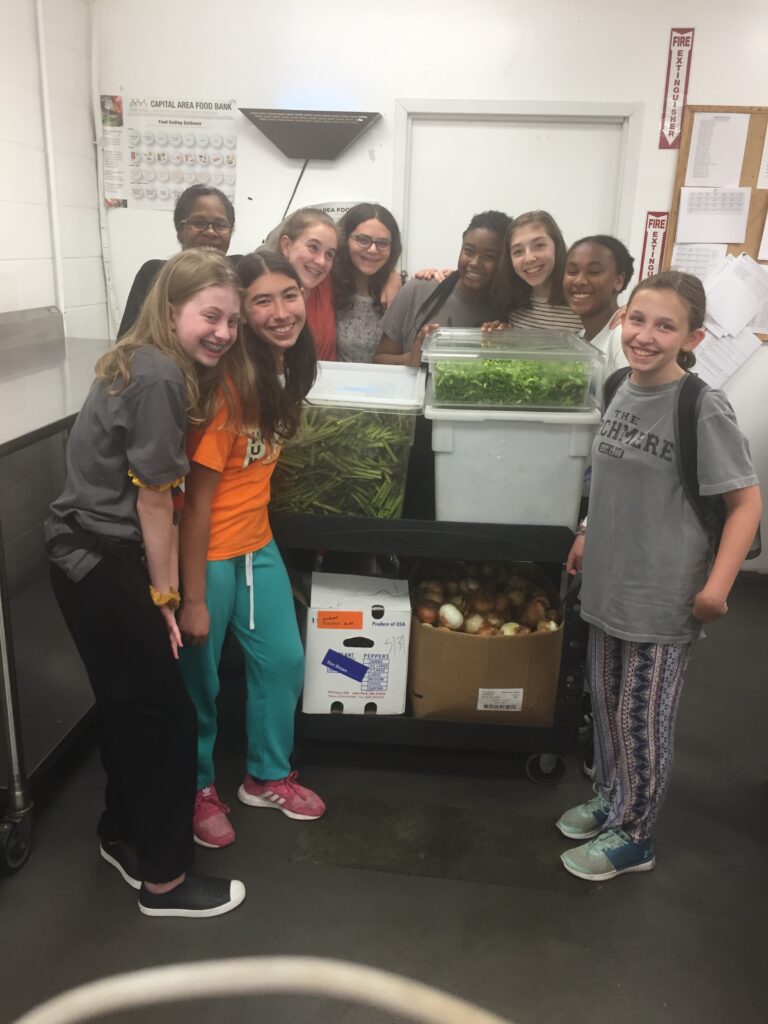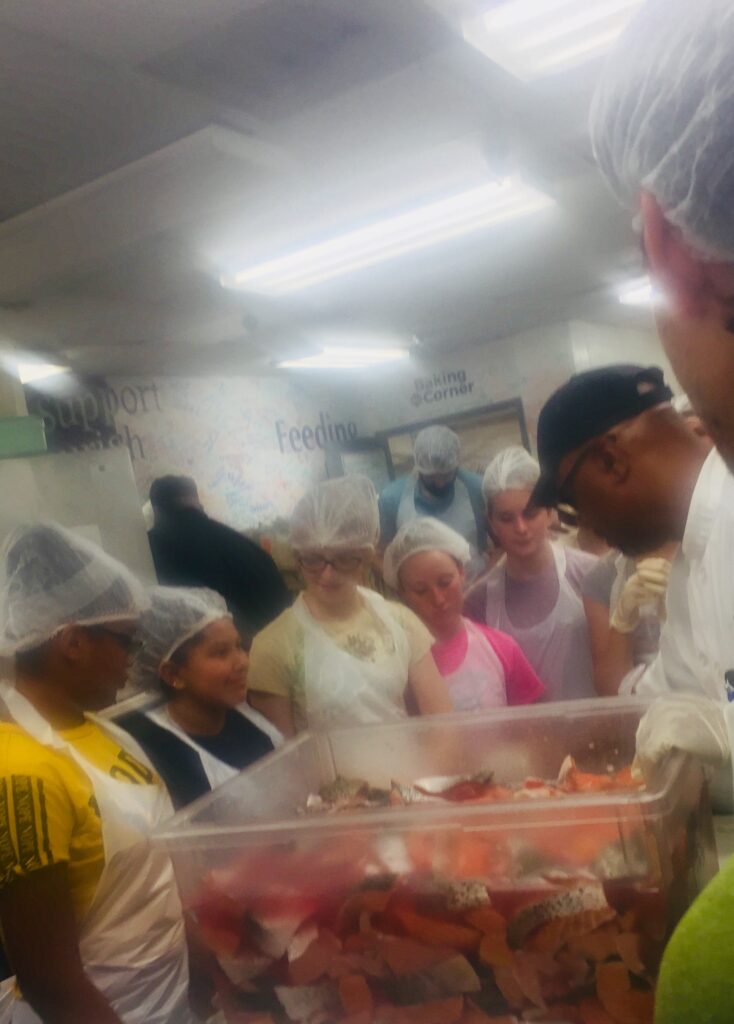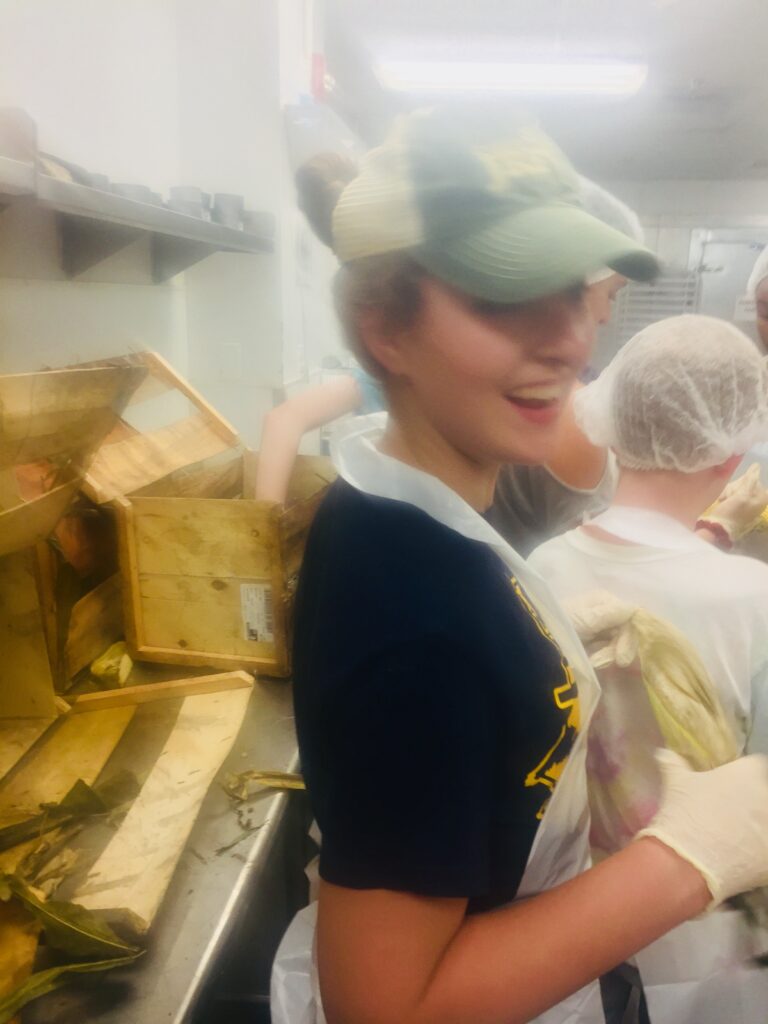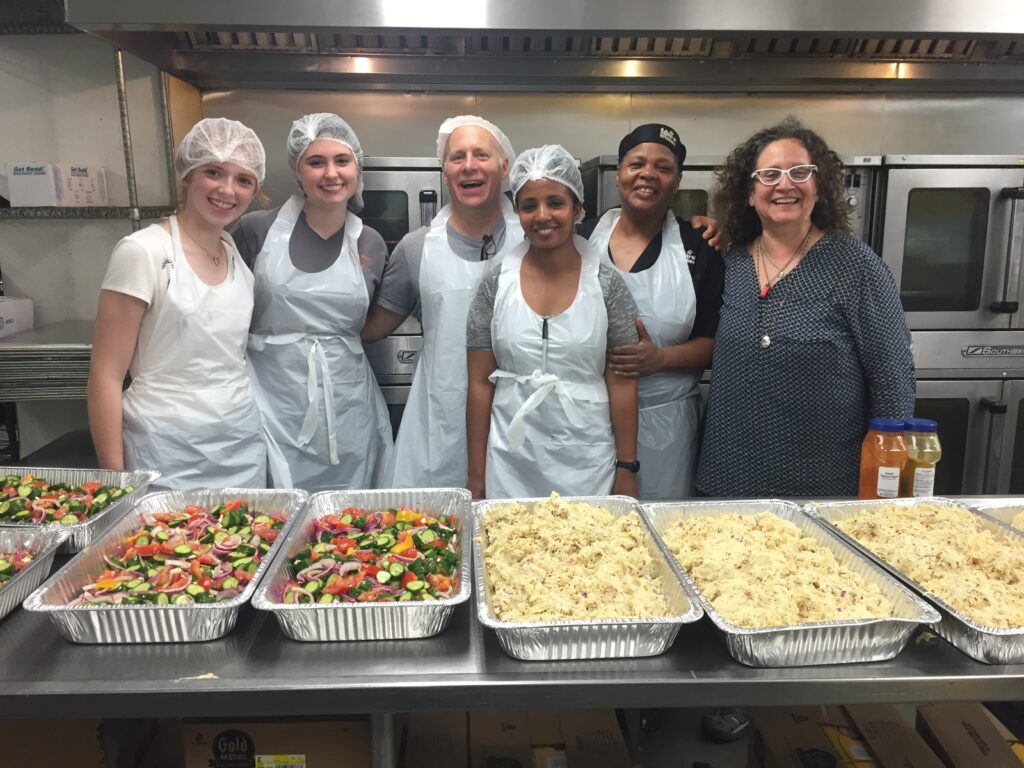Primary Contact: Pam Sommers
pam.sommers@adatshalom.net
Adat Shalom Reconstructionist Congregation
Though it’s impossible to thoroughly simulate what it’s like to worry about where your next meal is coming from, or where you will sleep at night, the Tikkun Ha’Ir Immersive Project in Hunger and Homelessness seeks to have its participants experience, as well as examine and discuss these issues.
For three days and two nights, middle/high school students live in a church parish hall and work primarily in a Washington DC neighborhood undergoing rapid gentrification. While engaging in simulations of life in a shelter and food insecurity, they spend much of their time preparing and serving meals at an area food kitchen, and delivering fresh produce from a local farmers market to residents of three apartment buildings providing affordable living to seniors and those with disabilities. They also spend time assisting at a neighborhood family shelter and learning what eviction entails. At all of these venues they meet with managers and directors who educate them about each organization and carve out time for questions. Participants travel on foot or via metro to all of these places, accompanied by adult team leaders.
At the start of the program, participants are divided into teams of 5. Each team is given the amount of cash equivalent to a family living on federal SNAP (Supplemental Nutrition Assistance Program) benefits. Each team decides how that money will pay for all of the food they will consume for the duration of the Project. They may purchase food from the local supermarket, fast food places, or purchase items from an in-house “store” set up by team leaders. In addition, each team participates in an “Iron Chef”-like competition, preparing a meal judged on presentation, creativity, taste, nutritional value and cost (the lowest gets the most points).
Each evening, participants gather for study, discussion and “Roses and Thorns” observations. The Torah is our primary source, with additional readings by both ancient and contemporary scholars (e.g., Don Isaac Abarbanel, Matthew Desmond, Rabbi Jill Jacobs). Everyone is expected to eventually bring all that they’ve studied/experienced back to our Adat Shalom community. They will contribute to a collective bimah presentation on hunger and homelessness as part of the chanting of Isaiah’s haftarah during the Yom Kippur Morning service. In addition, they will serve as ambassadors to the younger members of the community and their families, inspiring tikkun olam projects in class and at home.
Like so many places of worship, Adat Shalom is working hard to keep the post-B-Mitzvah cohort engaged. It’s abundantly clear that work and worship can take place in a mishkan of one’s own making, so why not let teens create a temporary spiritual home of their own devising? Have them interacting with the “gair” (stranger) that is mentioned so frequently in the Torah, but in immediate, hands-on, resonant situations? And then bring back that experience to their familiar spiritual home?
And I certainly look at this Project as a template, something that can be refashioned in a variety of ways to suit myriad populations and locations.
The inspiration for this project comes from two main sources. Certainly the words of Isaiah. And most significantly, from a community of Haitian people with whom I have had the privilege to work, break bread, celebrate and worship . After the 2010 earthquake in Haiti, Rabbi Sid Schwarz, Adat Shalom’s founding rabbi, traveled to that ravaged country and, upon his return, encouraged me to organize a service mission to Leogane, the epicenter of the quake. That experience–which has resulted in four subsequent missions, and a close relationship with Pastor John Felix and his amazing NICL school, congregation and community – opened my mind about poverty, faith, hands-on education and learning from/working alongside those you have come to “help”.





